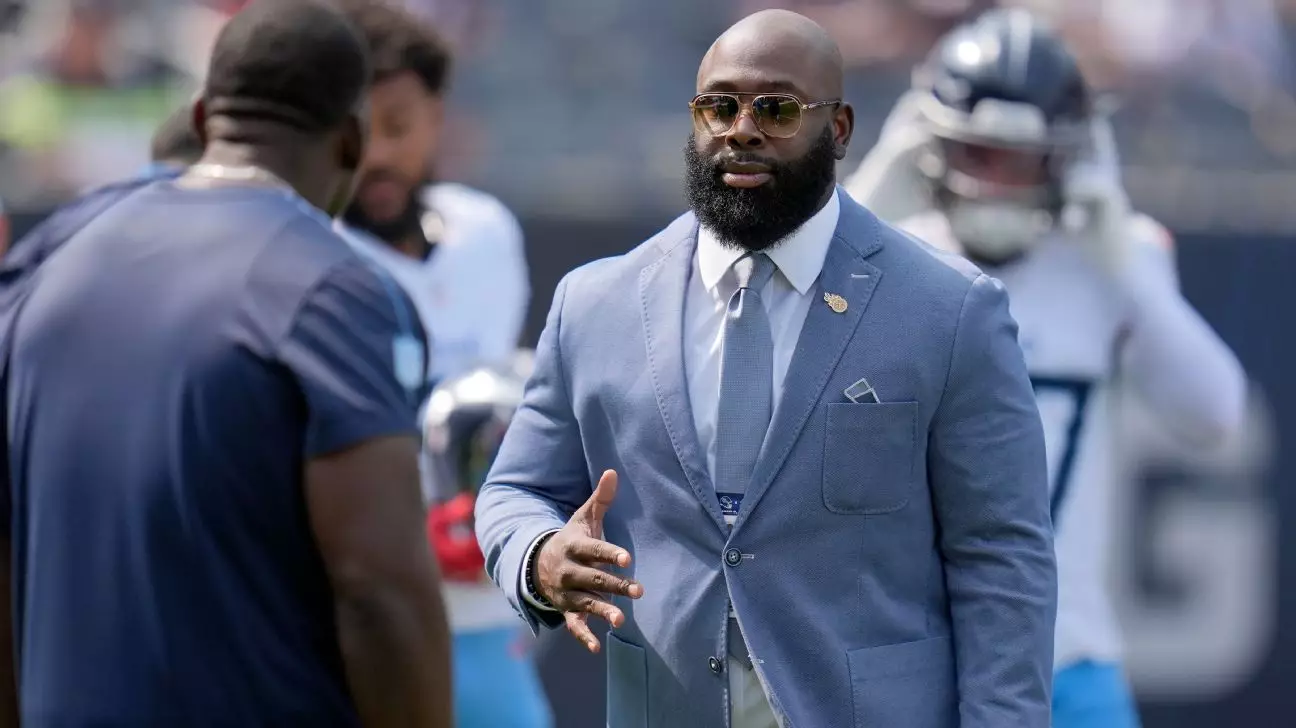In a significant shake-up within the franchise, the Tennessee Titans have parted ways with their general manager, Ran Carthon, following a disappointing season ending with a franchise-worst 3-14 record. The Titans, who have struggled to find their footing for an extended period, now hold the No. 1 pick in the 2025 NFL Draft, marking a crucial moment for the future of the team. The decision underscores a glaring need for change, particularly in leadership and roster management, as articulated by controlling owner Amy Adams Strunk in her somber announcement.
After consecutive underwhelming seasons—culminating in a woeful 9-25 record over the past two years—it became clear that Carthon’s vision did not translate into tangible improvements on the field. Strunk’s disappointment was palpable, with her statement reflecting the sentiments of the fanbase that has grown weary of poor performances and lack of progress. Such dedication to accountability signals a striving desire within the organization to rectify its course and return to prominence in the competitive landscape of the NFL.
As the Titans transition into this new era, Brian Callahan will remain at the helm as head coach. The choice to retain Callahan hints at a strategic decision by the organization to ensure continuity on the coaching staff while seeking a fresh perspective in player evaluation and acquisition. With Chad Brinker, the newly-acquired president of football operations, spearheading the search for a new general manager, the Titans are clearly focusing on finding someone who can not only evaluate talent effectively but can also partner seamlessly with the coaching staff.
Brinker emphasized the importance of the general manager’s role, indicating that they are looking for a candidate with a strong scouting background and proven success in building a competitive roster. The need for collaboration between the new GM and Callahan is critical, as they must work together to restore the Titans to their former glory. Given the Titans’ history and current standing, the organization faces a pivotal moment where the right hire could influence the team for years to come.
Carthon’s tenure serves as a cautionary tale regarding the intricacies of building a cohesive and competitive roster. His hiring followed significant turmoil after the firing of former GM Jon Robinson, who had faced his own challenges with player acquisition. The Titans have seen a number of key pieces falter, contributing to their downfall amidst an ever-evolving NFL landscape. In hiring a new general manager, the Titans are not just bringing in a new face; they are attempting to overhaul an entire organizational culture that has led to underachievement.
The Titans have missed the playoffs for two consecutive seasons, raising questions about the overall strategy and vision at the top. The hesitancy to align the roles of the head coach and general manager appropriately resulted in lackluster performances, illustrating how misaligned interests can jeopardize a franchise’s efforts. As they move forward, fostering an environment where the new GM and Callahan can communicate openly, share a common vision, and build a competitive team is paramount.
Looking Ahead: The Upcoming NFL Draft
The 2025 NFL Draft, in which the Titans will have the first overall pick, becomes a focal point of excitement and anxiety for the franchise. The opportunity to select a franchise-altering player, potentially like Colorado quarterback Shedeur Sanders, could galvanize an otherwise stagnant fanbase. The success of this decision will fall largely on the new general manager, underscoring the weighty responsibility that accompanies the position. Navigating the complexities of college evaluations and understanding how to translate that talent into NFL success will be vital for the Titans to escape mediocrity.
The change in leadership positions within the Tennessee Titans exemplifies a critical moment in the franchise’s recovery process. With a clear directive from ownership to shift gears, focus on effective scouting, and enhance collaboration between player personnel and coaching, the franchise hopes to foster a new narrative that breaks away from the cycle of losing and positions them favorably for future seasons. The stakes could not be higher as the organization stands at a crossroads, prepared to reforge its identity and aspirations in the highly competitive arena of professional football.


Leave a Reply